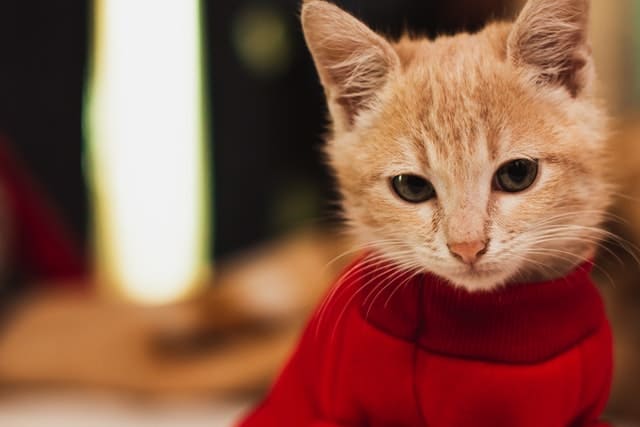
If the cat has undergone surgery, care must be taken to take care of the stitches in the correct way to avoid post-operative infections.
Surgical operations on cats are much more frequent than one might imagine: after all, just think of the numerous sterilization operations that are performed every day by veterinarians on our four-legged friends, whether they are male or female.
After a surgical intervention of any kind it is essential to pay attention to some aspects, and in particular to the sutures that close the cat’s wound: if a post-operative infection should occur, it could have decidedly dangerous consequences for the cat, lengthening the convalescence. and delaying his recovery.
Usually, in order for a cat’s surgical wound to heal completely, it is necessary to wait approximately ten days: after 8/10 days, the sutures will usually need to be removed unless the veterinarian has used absorbable stitches, which they disappear on their own in a period ranging from 8 days to about a month.
In this article we will see what are the hygiene and safety rules to be respected to avoid the risk of infection of the sutures in cats, with particular attention to post-sterilization surgical wounds.
Stitches and postoperative wounds: how to take care of the cat
The post-surgery phase is always extremely delicate and even in domestic felines there is no exception: the instructions of the veterinarian must be followed with extreme care, in order to minimize the risk of post-operative infection of the wound and its stitches.
Post-operative cat care begins when you go to take the cat to the vet immediately after surgery:
– At the time of discharge, make sure you have a suitable means of transport and a safe kennel for your cat.
– Do not open the pet carrier while you are in the car: the cat will still be nervous and not very lucid due to the anesthesia suffered and could be aggressive or jump out suddenly.
– Once you get home, leave the cat in a quiet room to dispose of the effects of anesthesia in solitude: open the pet carrier, leave it alone and close the doors and windows. He will spontaneously come out when he is ready to do so.
How to care for a cat’s suture wound

Just as it happens for dogs after surgery, cats will also tend to lick, scratch or nibble the wound: this behavior must be avoided in any way, because it could increase the risk of contracting dangerous infections. Therefore, make the cat wear a special Elizabethan collar specifically for cats.
The Elizabethan collar could annoy the cat during meals: when we feed the cat it is therefore advisable to remove it. Be careful, however, not to let yourself be softened in the rest of the day and especially during the night: let him wear it, he will get used to it in a very short time.
Some cats just can’t stand the Elizabethan collar. If this is the case, your vet may recommend alternatives such as a post surgery body or t-shirt that can keep the wound clean and safe.
To keep the surgical wound dry and clean, take useful precautions by covering the affected area with clean, sterile gauze. Take care to disinfect the cat’s wound every day, making sure to wear sterile gloves before proceeding.
Make sure you follow the veterinarian’s instructions precisely and scrupulously regarding the administration of post-operative drugs: if you need some advice, try reading our in-depth article on How to give medicines to cats.
Finally, cats that wake up after surgery can often experience nausea and pain, which will lead them to refuse to eat. The lack of appetite will resolve itself within a few hours, in the meantime don’t force the cat not to eat, but make sure he drinks some water.
Sterilization of the cat: post-operative for males and females
If the surgery undergone by the cat is a classic sterilization, the wound and the stitches will be slightly different depending on whether it is a male or a female.
The cat who undergoes a sterilization operation (oophorectomy or ovariohysterectomy) usually remains in the vet’s office until awakening from anesthesia. For these operations the sutures will be on the belly: usually the stitches are internal, so it is possible to get by simply with a covering gauze avoiding the Elizabethan collar.
In the male cat, on the other hand, the post-sterilization surgical wound is not found on the belly and the discomfort usually lasts only for a day or two: for this reason it is easier to prevent the cat from licking or biting the stitches, but it must be done anyway. a lot of attention at least immediately after the intervention.
Finally, be careful to introduce a cat back into the house after surgery if there are other animals: it is advisable to keep the cats separate for a couple of days and carefully wash the objects brought back by the clinic to eliminate odors.






